What is a Smart City?
The concept of smart cities isn’t new. Hollywood has popularized the notion of highly advanced cultures. But, it is only in the last two decades that the technology to make fiction a reality has come into place. Of note is 5G networking technology. 5G networking technology is touted as the silver bullet to the true ubiquity of the Internet. The technology will enable lighting fast wireless Internet and thus make the Internet of Things (IoT) a reality. The Internet of Things is a network of Internet-enabled physical objects. In a smart city, these objects use the Internet to exchange data with other systems and devices.
What is a Smart City?
There is no standard smart city definition. The most basic definition of a smart city is an urban area that uses technology to manage infrastructure, transport systems, utilities, social systems, and other smart city amenities and deliver services. It also leverages technology to solve problems and improve the quality of life of its citizens.
Devices and sensors within the city collect data and relay it to a central analytics section where it is analyzed. The insights gleaned are used to make operational and urban planning decisions.
For example, smart traffic cameras have been used in many places to solve traffic congestion. It is accepted that traffic congestion is caused by poor road conditions, bad road design, driver indiscipline, inappropriate bus stop locations, limited road space, car ownership trends, and other macro factors. Combined with a traffic management system, smart traffic cameras identify patterns of traffic build-up, and smart traffic lights automatically turn red or green to minimize congestions. They also act as a deterrent for bad drivers who run stop signs and change lanes erratically. The data from smart traffic cameras and other sensors are used to plan future road design and inform policy decisions.
What makes a smart city?
What do smart cities do? Let’s extend the definition above and consider the characteristics of smart cities and communities:
- The use of information and communications technology, and Artificial Intelligence (AI) to support citizens’ needs.
- The fulfillment of citizens’ needs such as infrastructure, education, housing, healthcare, and digital equality.
- Smart planning with the support of citizens’. This involves the intelligent analysis of data. Citizen involvement and support in planning decision-making is a vital ingredient to the development of inclusive smart cities.
- A sustainable urban economy that effectively manages its environment can mitigate the problems of urbanization, such as population growth and climate change.
- Economic competitiveness in terms of economic growth, job creation, and retraining.
- Advanced security measures that protect the city and its residents from cyber-attacks and natural calamities.
What problems are solved by smart cities?
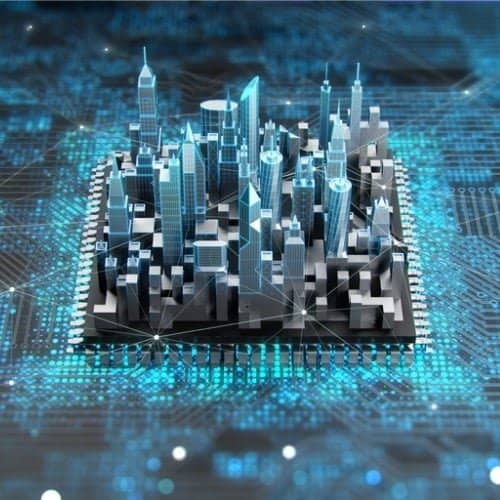 Smart city initiatives have proliferated around the world. Almost every country in the world, including many poor third-world countries, has a smart city project. The reason for this trend is because urban planners appreciate that the smart city concept can and does solve many contemporary problems posed by urbanization.
Smart city initiatives have proliferated around the world. Almost every country in the world, including many poor third-world countries, has a smart city project. The reason for this trend is because urban planners appreciate that the smart city concept can and does solve many contemporary problems posed by urbanization.
According to the United Nations, 68% of the global population will live in urban areas by 2050. This will put enormous pressure on already overcrowded cities. In North America, Latin America, and the Caribbean, over 80% of the population already lives in urban areas. In Europe, 74% of the population lives in cities while 68% in Oceania live in urban areas. Asia recently surpassed the 50% mark. Only Africa remains largely rural, with 43% of its population residing in urban areas. This population growth has created a myriad of problems such as never-ending traffic congestion, pollution, health crises and pandemics, unemployment, inadequate infrastructure, runaway crime, high energy requirements, overstretched social services, and a host of other challenges.
The solution to these challenges is smart building and cities. Smart cities are the only way to guarantee sustainable urbanization. The massive collection of data combined with powerful analysis tools allows city officials and citizens to identify needs, interests, problems, and barriers. With this information, urban management improves, and with better management, the twin goals of sustainable urbanization and high quality of life are achieved.
Global Smart City Index
Every year, several organizations rank smart cities using a set of criteria. For example, the Institute for Management Development (IMD) releases an annual smart city ranking based on evaluating five key areas: health, safety, mobility, activities, opportunities, and governance.
Having provided a smart city overview, the next section takes examples of smart city projects based on the IMD Global Smart City Index for 2020.
3 Smart Cities Examples
Below are three smart cities examples in their ranking order from the IMD Global Smart City Index for 2020.
- Singapore: This city-state in southeast Asia is a trailblazer in the implementation of smart city initiatives. The city has won the award two years in a row and with good reason. Singapore scores highly on all five Global Smart City Index parameters. The Smart Nation initiative was launched in 2014 and has been phenomenally successful.
- Helsinki: Finland’s southern capital scored highly in 2020, jumping six places from its 8th ranking in 2019. Helsinki is said to be one of the most functional cities in the world.
- Zurich: The global center for banking and finance was ranked second in 2019 but dropped one place in 2020.
What is the Smart Cities Market Worth?
The increasing smart city initiatives and the growing adoption of connected and smart solutions are driving the growth of the smart cities market. The technologies driving connectivity and smart solutions are 5G Internet and Internet of Things (IoT). According to The GSM Association’s post-COVID-19 global forecast, there will be over 1.7 billion 5G subscribers by 2025.
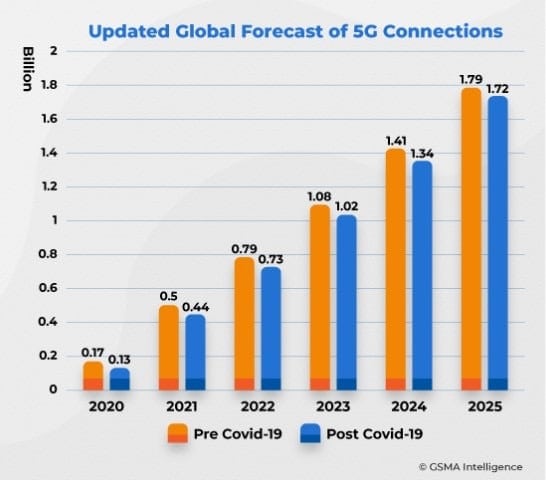
According to Research and Markets, the smart city market forecast is bullish. Between 2020 and 2025, smart city’s market size is expected to grow at a compound annual growth rate (CAGR) of 14.8%. This translates to a more than doubling in size from $410.8 billion in 2020 to $820.7 billion by 2025. The fastest-growing region is expected to be the Asian Pacific region due to the heightened adoption of IoT and the demand for smart solutions.
Citizen empowerment and engagement is a major growth factor for smart cities. Therefore, regions that encourage public participation in policy-making will have the fastest adoption rates and consequently a better quality of life.
Things to Consider in your Smart City Plan
There are two conceptualization models for a smart city plan, the technocentric approach or the holistic approach. The former is promoted by the ICT industry and focuses on technological elements such as 5G, IoT, and big data to improve urban management. The holistic approach is more preferred because it seeks to balance technology and other environmental, social, human, cultural, and economic factors. Based on a holistic approach, the following are the main things to consider when planning a smart city:
- Data: Data is the foundation of a smart city. Urban planning and smart cities are impossible without data. The decisions made will only be as good as the data. As the old computing adage goes, “garbage in, garbage out.” Urban planners must figure out where the data resides, how to get it, transfer, store it, and analyze it.
- Network: Data requires a structure that the network provides. The network must be fast enough to pull and transmit data at a moment’s notice. This is the reason 5G technology is a key ingredient to smart city planning. 5G Internet speeds range from 50 Mbits per second to over a gigabit per second.
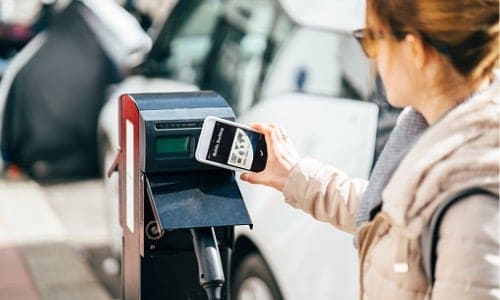 IoT Connectivity: For a city to be smart, there will be to be a wide array of devices collecting data. When planning, city officials need to think about which IoT devices to connect with and how to do it. For example, a sensor on a lamp post to record foot traffic and a traffic camera have different requirements. The lampost sensor doesn’t have large bandwidth requirements, which a traffic camera requires massive bandwidth to move large files. The sensor also has lower power requirements and can operate on a battery.
IoT Connectivity: For a city to be smart, there will be to be a wide array of devices collecting data. When planning, city officials need to think about which IoT devices to connect with and how to do it. For example, a sensor on a lamp post to record foot traffic and a traffic camera have different requirements. The lampost sensor doesn’t have large bandwidth requirements, which a traffic camera requires massive bandwidth to move large files. The sensor also has lower power requirements and can operate on a battery.- Cyber resilience: Increased connectivity invariably comes with security risks. When planning a smart city, planners must strike a balance between data privacy and efficiency. Cybersecurity is critical to the success of a smart city. A successful hack can lead to catastrophe. For example, terrorists could gain access to a city’s control center and wreak havoc on transportation systems. Hackers could also gain access and install ransomware, bringing city operations to a complete halt until the ransom is paid.
- An engaged citizenry: Planners should aim to have inclusive smart cities. Citizens know the problems they face and have opinions on how they can be solved. Public participation must be built into the smart city planning process to ensure the solutions have a real impact by improving the quality of life.
The Smart City Drawing – What is it?
Part of the planning process involves smart city visualization. A smart city drawing shows the various infrastructure, components, and systems in a city. Like other architectural drawings, it can be visualized using a 3D model. People can also get guided tours in virtual and augmented reality models.
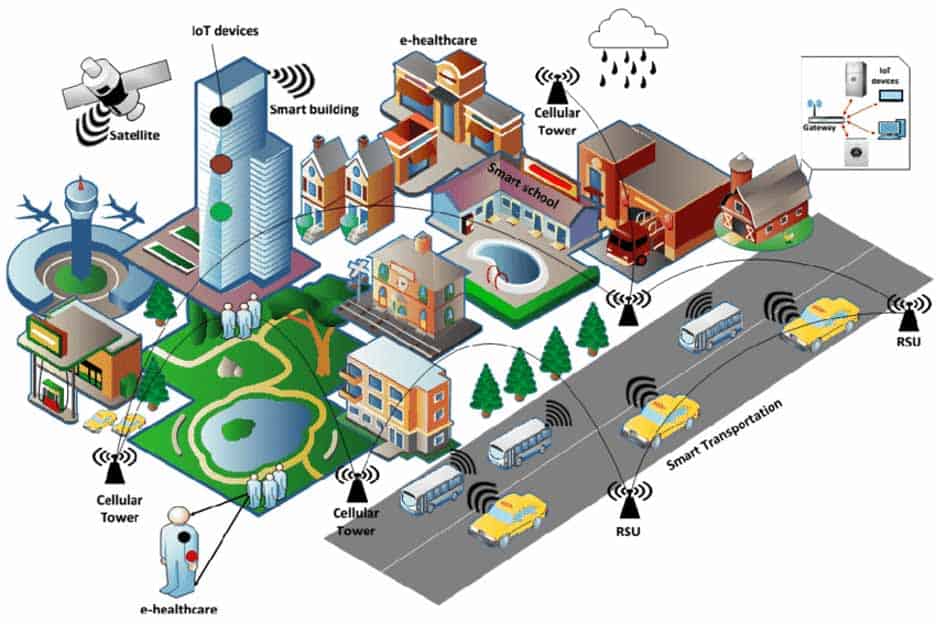
One of the earliest examples of how virtual reality can be used in urban planning was Melbourne, Australia. In 2003, city officials created a VR urban model for an environmental planning study. The study analyzed the thermal repercussions of implementation.
“Plan Melbourne” at the pedestrian level at a neighborhood scale. Smart city visualization has been replicated in many other parts of the world and has helped urban planners come up with realistic models.
Elements of Good Smart City Design
The concept is a smart city is fast developing and still in flux. As such, the elements of a good smart city design will depend on whom you ask. However, there are several smart design principles issues that most experts would agree should go into smart city design.
It is also important to take cognizance of the fact that while technology is key, smart cities begin with people, not technology. It doesn’t matter how much technology a city uses to solve people’s problems and improve their quality of life. This is why the IMD Global Smart City Index for 2020 uses the indicators below to come up with a smart city ranking. These indicators are the elements of good smart city design.
Health and Safety
A smart city must adequately address the health and safety needs of its citizens. These needs include:
- Basic sanitation
- Recycling services
- Public safety
- Air pollution
- Medical services
- Affordable housing
Some of the smart city IoT architecture that can address these needs includes:
- Online reporting of city problems
- Apps or websites that allow residents to giveaway items for recycling
- Free public Wi-Fi
- CCTV cameras
- Apps that monitor air pollution
- Online medical appointments or telemedicine
Mobility
A smart city must ensure that its citizens commute without delays and do so comfortably. Specifically, a smart city design ensures traffic congestion is eliminated and that public transport is satisfactory to the citizens. Some of the technologies that can help a smart city meet these objectives include:
- Ride-sharing apps to reduce congestion
- Parking apps that direct drivers to available parking
- Bicycle hiring services
- Online scheduling and ticket sales for public transport
- Periodic dissemination of traffic information via mobile phones

Activities
Cultural activities and leisure time are an indicator of high quality of life. Smart city design must take this into account. Cultural activities (shows, bars, and museums) must be satisfactory to the residents. For example, online ticketing and booking make it easier for residents to attend cultural shows. There must also be sufficient green spaces.
Opportunities
In a smart city, employment and business opportunities are readily available. Children have access to good schools, and lifelong learning opportunities are available. These opportunities are available to people from all walks of life, including minorities. Some examples of the technologies that make this possible include:
- Online access to job listings
- IT skills taught at an early age
- Online services make business startups easy
- The Internet is fast and reliable
Governance
Good governance is a critical component of smart cities. There must be public participation in decision-making, and the decisions of local government officials must be readily accessible to the public. Smart cities also have zero tolerance for corruption. Some of the technologies that enable good governance include:
- Online public access to city budgets and audits
- Online voting
- Online website to collect ideas from the public
- Online processing of identification documents
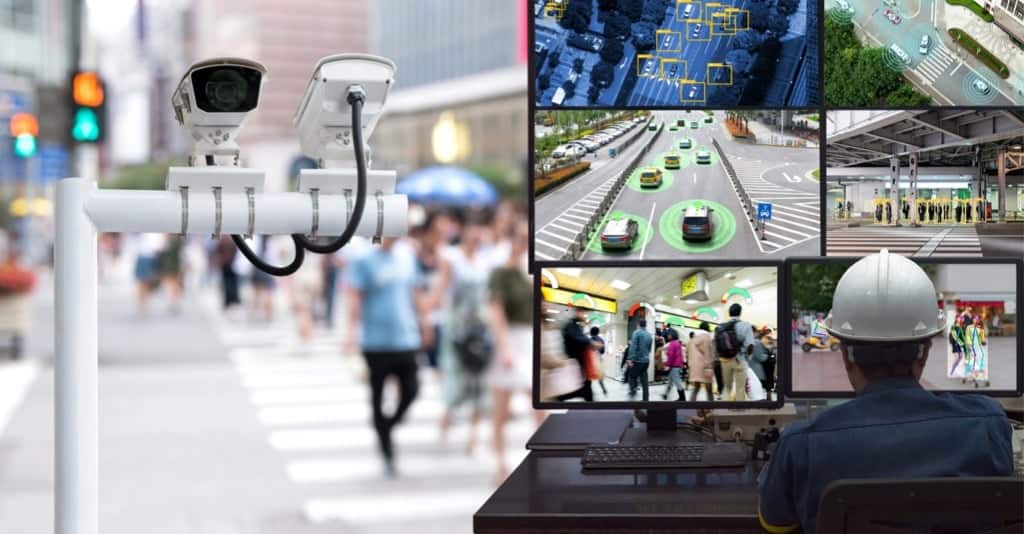
Smart City Development Process
Smart city development involves five stages as follows:
- Starting: This is the pre-planning stage where officials and residents engage. Objectives are identified, and there is a meeting of minds that a smart city will serve the needs of residents.
- Planning: the strategic framework is created. Goals, objectives, and action plans are captured. Implementation teams are set up, resource needs analysis is done, and budgets are drawn up.
- Project development: Projects to meet the objectives are implemented.
- Monitoring and evaluation: The results are analyzed, and any deviations from the plan are corrected.
The smart city development process is illustrated by the image below, representing the process followed by the City of Amsterdam.
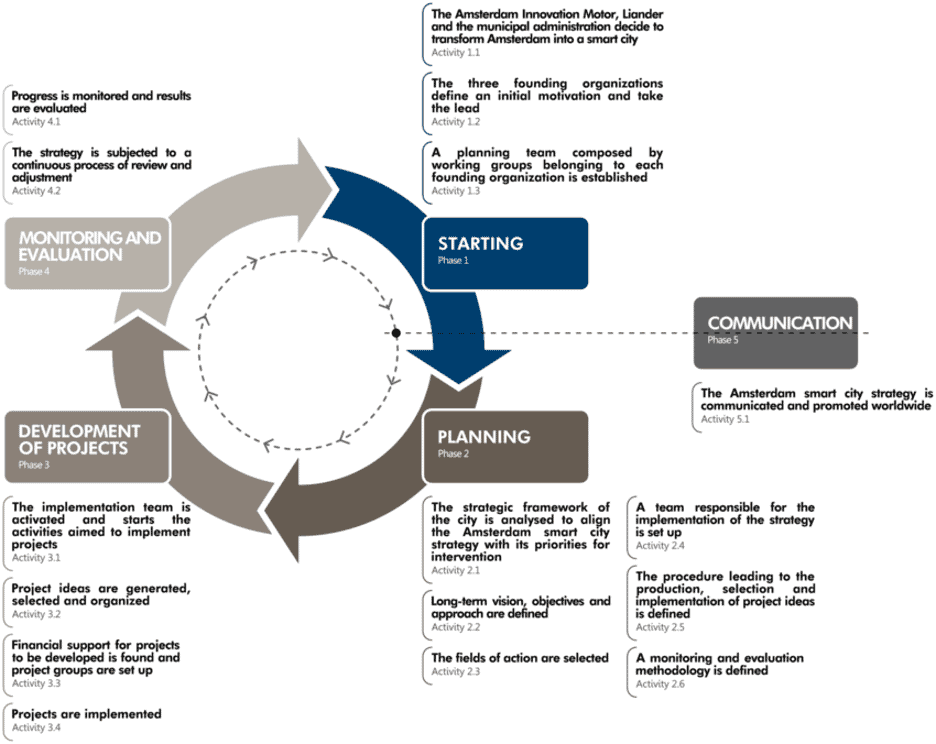
Smart City Infrastructure Elements
The main smart city infrastructure elements would include:
- Sufficient Water Supply
- Affordable housing, especially for the poor
- Guaranteed Electricity Supply
- Efficient City Mobility and Public Transport
- Excellent governance, particularly e-Governance and citizen participation
- Health and Education
- Robust IT connectivity and digitization
- Safety and security of citizens, especially women, children, the elderly, the vulnerable, and minorities
- Sanitation, including Solid Waste Management
- Sustainable environment
Characteristics of Smart City
What smart city components are implemented in these smart cities? The characteristics of smart city and the features of smart city include the following:
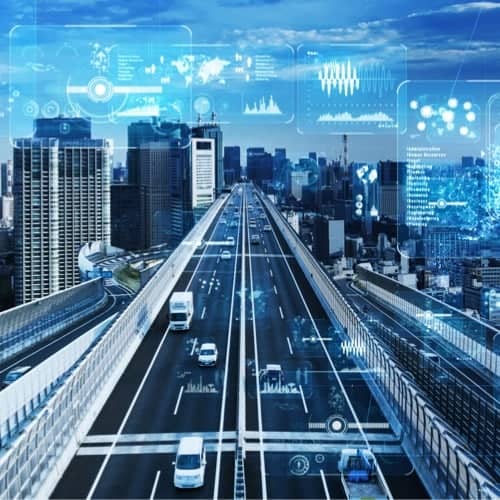 The use of ICT and Artificial Intelligence (AI) to manage smart city aspects
The use of ICT and Artificial Intelligence (AI) to manage smart city aspects- Good infrastructure, education, housing, healthcare, and digital equality
- Smart planning
- A sustainable urban economy
- Economic competitiveness
- Advanced security measures
The above are the features of the smart city project. There are also four pillars of smart city derived from lessons learned as noted below:
- Network connectivity: ubiquitous broadband network with IoT devices and connected applications.
- Effective mobility: this includes intelligent transport systems and smart transport solutions.
- Cyber resilience: striking a balance between data privacy and data efficiency.
- Citizen engagement: Involvement of all stakeholders in smart city initiatives.
Why a Smart City is Necessary in the Future
Why smart city is necessary is because smart cities hold the key to solving the challenges posed by urbanization. As more people move to cities and with the majority of the global population expected to live in urban areas by 2050, urban planners must find a way to ensure cities are sustainable. The concept of smart cities and the associated technologies can solve urbanization problems. However, this will only happen with proper planning. Poor planning will have the opposite effect. Instead of solving problems, new issues related to cybersecurity and digital inequality will arise.
What is the aim of Smart Cities?
The goals of smart city are to solve contemporary problems that are brought on by rapid urbanization. Smart city development vision goals activities are aimed at ensuring that urbanization does not lead to cities that are unhygienic, polluted, noisy, congested, and are death traps.
Smart city goals are about solving the challenges posed by urbanization.
So, what is the smart city mission or what is the aim of smart cities? At the end of the day, the main mission is to improve the quality of life of the city residents.
A Brief History of Smart City
The history of smart city is best understood by examining the timeline of major milestones as shown below:
Cisco sets aside $25m to fund smart city research.


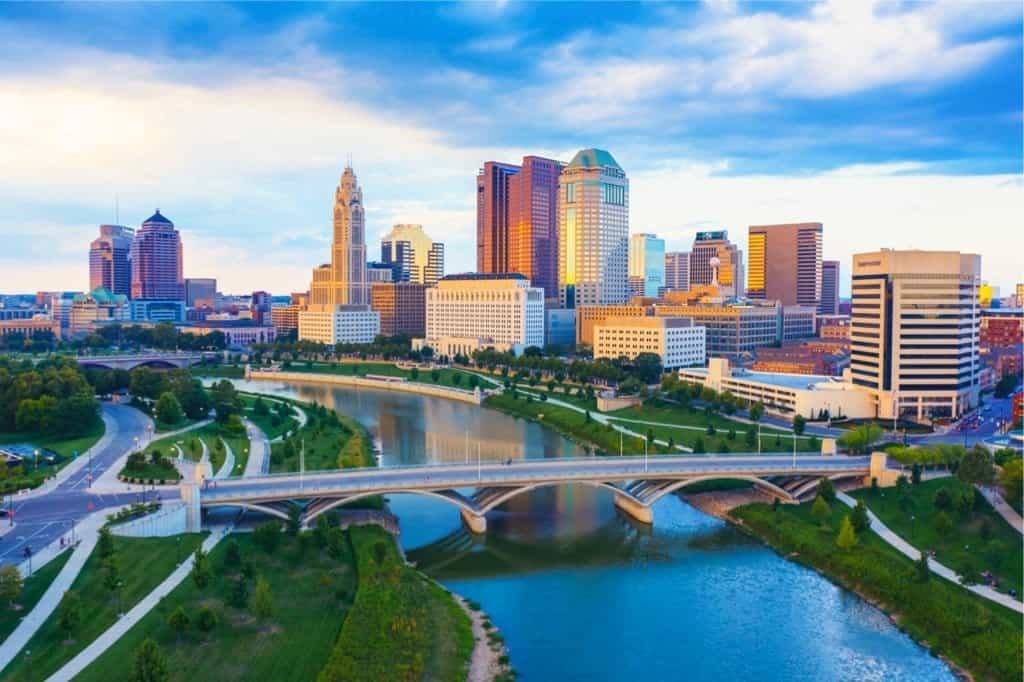

What Does a Future Smart City Look Like
The future smart city is a page straight out of a science fiction novel. You can expect smart sustainable cities of the future to have advanced technologies such as autonomous vehicles, human-machine interfaces, pervasive broadband Internet, telemedicine, artificial intelligence, and a host of other technologies that are still in their nascent stages.
But, these technologies are just the tip of the iceberg. The future scope of smart city is to improve the quality of life. So for smart cities, the future of urban development is a scenario where people live and commute comfortably, are free of disease and have access to world-class health services, have personal security, live in pollution-free areas, have access to green recreational spaces, and have all the amenities that a comfortable life provides.
Top Benefits of a Smart City
What are the benefits of a smart city? Smart cities leverage technology to derive a host of benefits. These benefits of a smart city include:
- Effective data-driven decision-making is one of the benefits of IoT in smart cities
- Better engagement between local officials and residents
- Improved safety and security
- Environmental benefits of smart cities come about due to the use of air quality sensors, renewable energy sources, and energy-efficient buildings
- Better transportation
- Free reliable fast Internet broadband for all residents
- Economic benefits of smart cities include new job opportunities and faster gross domestic product growth
- Efficient public utilities
- Better infrastructure
These are the main benefits of smart city, but as time goes by, more benefits are bound to become evident. The question “what is the benefit of smart city” will continue to feature in any discussion about smart cities. The best examples of smart cities that are already deriving these benefits are Singapore, Zurich, and Helsinki.
Pros and Cons of Smart Cities
There are advantages and disadvantages of smart cities. Due to the hype that characterizes any new technological development, the advantages of smart cities are well known. Smart cities are touted as the solution to the challenges posed by urbanization. Smart cities will make our cities sustainable as more humans move to urban areas. Smart city initiatives such as energy-efficient building and air quality sensors will ensure that we keep the environment safe. Technologies such as smart traffic cameras and intelligent routing will significantly reduce and even eliminate traffic congestion. Recycling will ensure that resource depletion is checked. Residents will have green areas for recreation, and reduced pollution will have positive health outcomes.
But, there are also disadvantages of smart city. The main disadvantage is data privacy. As more devices come online, humans will invariably lose some privacy. Devices in the home or office could be used to spy on individuals. Public networks can also be hacked.
Smart Cities Problems and Possible Solutions
Despite the benefits of smart cities, there are smart city risks and smart city problems. Smart cities problems and solutions begin with implementation challenges. Each city is unique, and there are differing opinions on deployment. These differences can be summarized into the following:
- Problems with technology coverage and capacity
- Digital security
- Existing legislation and policies
- Reluctance by residents or low confidence in smart city initiatives.
- Lack of funding and business models
- Interoperability
- Non-existent or poor energy, water, and transport infrastructure
These issues inevitably lead to problems with smart cities. To successfully deploy, planners must begin with a smart city problem statement. This should be followed by a Strengths, Weaknesses, Threats, and Opportunities (SWOT) analysis to see identify potential problems and how they can be mitigated.
Smart City Safety and Security Concerns
With proper planning, smart cities will solve the challenges posed by urbanization. However, smart cities pose cybersecurity challenges. The collection of data by devices poses smart city security challenges and privacy concerns. Are the citizens willing to cede their privacy in return for a better quality of life? Are you comfortable knowing that the television is silently collecting your viewing habits or your fridge knowing how many calories you have eaten in a day? These are tough questions that society must grapple with and come to terms with. There will be a need for smart cities and cyber security legislation that regulates the use of big data in a smart city. Cities will need to invest in data anonymization tools to ensure that such data is never personally identifying.
The cybersecurity challenges faced in a smart city also include the risk of hacking. In a heavily connected world, hackers can gain access to personal computing devices such as smartphones, and they can also hack private corporations and public institutions. Companies run the risk of losing proprietary data and inventions. There is a likelihood that terrorists could hack a mass transit system and send trains crashing into each other or drones falling out of the sky. Such a scenario calls for cybersecurity and privacy solutions in smart cities.
Finally, since a lot of the technology will be artificial, the safety and security in smart cities could be compromised by rogue AI. Such smart cities’ security concerns are not unwarranted. While some may argue that this is stretching science fiction too far, there is the possibility of nefarious or even eccentric developers writing machine learning code that ultimately, through learning, logically concludes that the elimination of the human race is the best outcome for the planet. To craft enduring smart city safety and security policies, city planners must consider such notions, however far-fetched they may sound. The ideal smart city security is a situation where AI systems obey Isaac Asimov’s three laws of robotics.